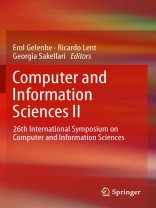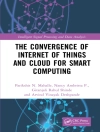Information technology is the enabling foundation for all of human activity at the beginning of the 21st century, and advances in this area are crucial to all of us. These advances are taking place all over the world and can only be followed and perceived when researchers from all over the world assemble, and exchange their ideas in conferences such as the one presented in this proceedings volume regarding the 26th International Symposium on Computer and Information Systems, held at the Royal Society in London on 26th to 28th September 2011.
Computer and Information Sciences II contains novel advances in the state of the art covering applied research in electrical and computer engineering and computer science, across the broad area of information technology. It provides access to the main innovative activities in research across the world, and points to the results obtained recently by some of the most active teams in both Europe and Asia.
قائمة المحتويات
Search Computing: Addressing Complex Search on the Web.- Hypergraph-Theoretic Partitioning Models for Parallel Web Crawling.- Web Service Discovery: A Service Oriented, Peer-to-Peer Approach with Categorization.- Finding High Order Dependencies in Data.- Heuristic Algorithms for Real-Time Unsplittable Data Dissemination Problem.- Automatic Categorization of Ottoman Literary Texts by Poet and Time Period.- An Empirical Study About Search-Based Refactoring Using Alternative Multiple and Population-Based Search Techniques.- Unsupervised Morphological Analysis Using Tries.- A Novel Approach to Morphological Disambiguation for Turkish.- A Small Footprint Hybrid Statistical and Unit Selection Text-To-Speech Synthesis System for Turkish.- Enhancing Incremental Feature Subset Selection in High-Dimensional Databases by Adding a Backward Step.- Memory Resident Parallel Inverted Index Construction.- Dynamic Programming with Ant Colony Optimization Metaheuristic for Optimization of Distributed Database Queries.- Energy Cost Model for Frequent Item Set Discovery in Unstructured P2P Networks.- Towards a Fairer Energy Consumption in Wireless Ad Hoc Networks.- Energy Efficient Resource Allocation Strategy for Cloud Data Centers.- A Survey of Recent Work on Energy Harvesting Networks.- Distributed Energy-Aware Routing of Traffic.- A Distributed Scheme to Detect Wormhole Attacks in Mobile Wireless Sensor Networks.- Cross-Layer Optimization with Two-Group Loading for Ad-Hoc Networks.- Algorithms for Sink Mobility in Wireless Sensor Networks to Improve Network Lifetime.- A Hybrid Interference-Aware Multi-Path Routing Protocol for Mobile Ad Hoc Network.- Providing Automated Actions in Wireless Multimedia Sensor Networks via Active Rules.- File Transfer Application for Sharing Femto Access.- Time Parallel Simulation and hv-Monotonicity.- A Prediction Based Mobility Extension for e HIP Protocol.- Performance Evaluation of a Multiuser Interactive Networking System – A Comparison of Modeling Methods.- Auction-Based Admission Control for Self-Aware Networks.- Complexity Reduction for Multi-hop Network End-to-end Delay Minimization.- Performance Improvement of an Optical Network Providing.- G-Network Modelling Based Abnormal Pathway Detection in Gene Regulatory Networks.- De DALO: A Framework for Distributed Systems Dependencies Discovery and Analysis.- A Content-Based Social Network Study of Evliya Celebi’s Seyahatname-Bitlis Section.- On the Parameterised Complexity of Learning Patterns.- Using SVM to Avoid Humans – A Case of a Small Autonomous Mobile Robot in an Office.- Palmprint Verification Using Sift Majority Voting.- 3D Object Exploration using Viewpoint and Mesh Saliency Entropies.- Boundary Descriptors for Visual Speech Recognition.- Semi-Automatic Adaptation of High-Polygon Wireframe Face Models Through Inverse Perspective Projection.- A Fuzzy Metric in GPUs: Fast and Efficient Method for the Impulsive Image Noise Removal.- Improved Secret Image Sharing Method by Encoding Shared Values with Authentication Bits.- Intelligent Navigation Systems for Building Evacuation.- Automatic Population of Scenarios with Augmented Virtuality.- Support for Resilient Communications in Future Disaster Management.- Agent-Based Modeling of a Price Information Trading Business.- Modeling Lane Preferences in Agent-Based Multi-Lane Highway Simulation.- Chromosome Coding Methods in Genetic Algorithm for Path Planning of Mobile Robots.- Client-Based Card Space-Open ID Interoperation.- An Artificial Immune Classifier Using Pseudo-Ellipsoid Rules.- Contextually Learnt Detection of Unusual Motion-Based Behaviour in Crowded Public Spaces.- Grid Security Loopholes with Proposed Countermeasures.- Detection of Broken Link Fraud in DSDV Routing.- Strategies for Risk Facing in Work Environments.- Numerical Integration Methods for Simulation of Mass-Spring-Damper Systems.- Multi-layered Simulation Architecture: A Practical Approach.- Variable Threshold Based Cutting Method for Virtual Surgery Simulations.- Model Based Approach to the Federation Object Model (FOM) Independence Problem.- Secondary Bus Performance in Retiring Cache Writebacks to Memory.- Runtime Verification of Component-Based Embedded Software.- Model-Based Software Integration for Flexible Design of Cyber-Physical Systems.- Generating Preset Distinguishing Sequences Using SAT.- A Decision-Making Ontology for Analytical Requirements Elicitation.- Spatio-temporal Pattern and Trend Extraction on Turkish Meteorological Data.- Contrastive Learning in Random Neural Networks and Its Relation to Gradient-Descent Learning.- A Genetic Algorithms Based Classifier for Object Classification in Images.- Two Alternate Methods for Information Retrieval from Turkish Radiology Reports.- Scaled On-line Unsupervised Learning Algorithm for a SOM-HMM Hybrid.- Sequential Pattern Knowledge in Multi-Relational Learning.- Zoom-In/Zoom-Out Algorithms for FCA with Attribute Granularity.- A Hyper-heuristic Based on Random Gradient, Greedy and Dominance.- A Class of Methods Combining L-BFGS and Truncated Newton.- Adaptation and Fine-Tuning of the Weighted Sum Method on Personnel Assignment Problem with Hierarchical Ordering and Team Constraints.- An Option Pricing Model Calibration Using Algorithmic Differentiation.












